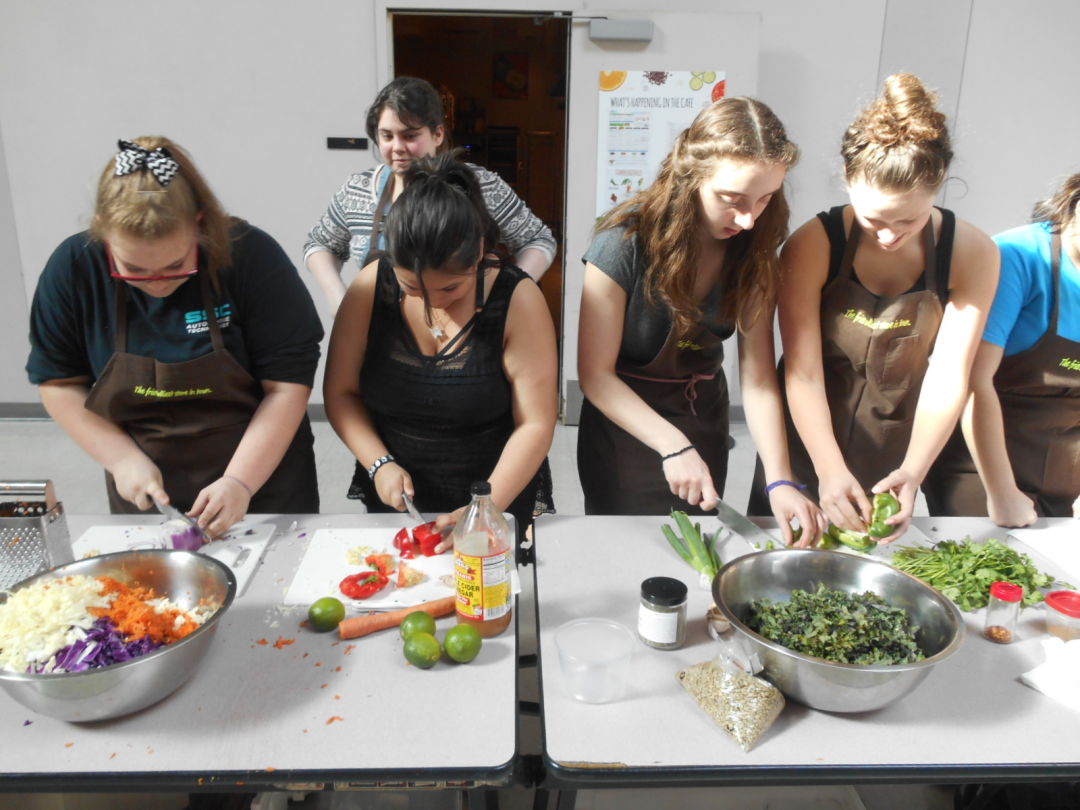What’s Cooking at Portland Public Schools?

Can reviving home economics close the achievement gap? Maggie Michaels suspects so. Michaels spent nearly a decade as a language arts teacher at local Title I high schools, where she primarily served at-risk youth. Over the years, she observed her students opting for saccharine sodas and other processed foods that she claims affected their ability to learn effectively.
“Many of our students—whether they are Title I or not—do not have families supporting them when making food choices, or teaching them culinary skills,” Michaels says. “Public funding for food and culinary education in schools was cut over 15 years ago.”
Michaels took a leave of absence from Jefferson five years ago while she brainstormed a nutrition program that would integrate culinary skills and healthy eating habits into the traditional core academic curriculum. Concurrently, she substitute taught at Madison High, where the principal had received a School Improvement Grant—so Michaels pitched her plan and ultimately launched the Seeds of Cuisine, a five-week summer program that had students receiving academic credit for gardening and cooking classes. At the end of the summer, the students launched Portland’s first student-led farmer’s market.
The Seeds of Cuisine was a resounding success, and the Curriculum of Cuisine shortly followed. The program brings local chefs into the classroom once a week for a semester (6-8 weeks) to teach basic culinary skills, recipes, and nutrition education. “We partner with teachers, and we engage non-traditional learners in academically rigorous required classes,” Michaels explains. “Students get looped in through the chef sessions, and that excitement carries over.”
The program enhances core subjects by offering empowering hands-on experiences, Michaels claims, and having a trained chef in the classroom exposes students to the professional field. Long term, Michaels hopes to provide students with a more holistic education that will increase graduation rates and decrease the race-based achievement gap. So far, carrots and homemade hummus are a student-approved favorite.




